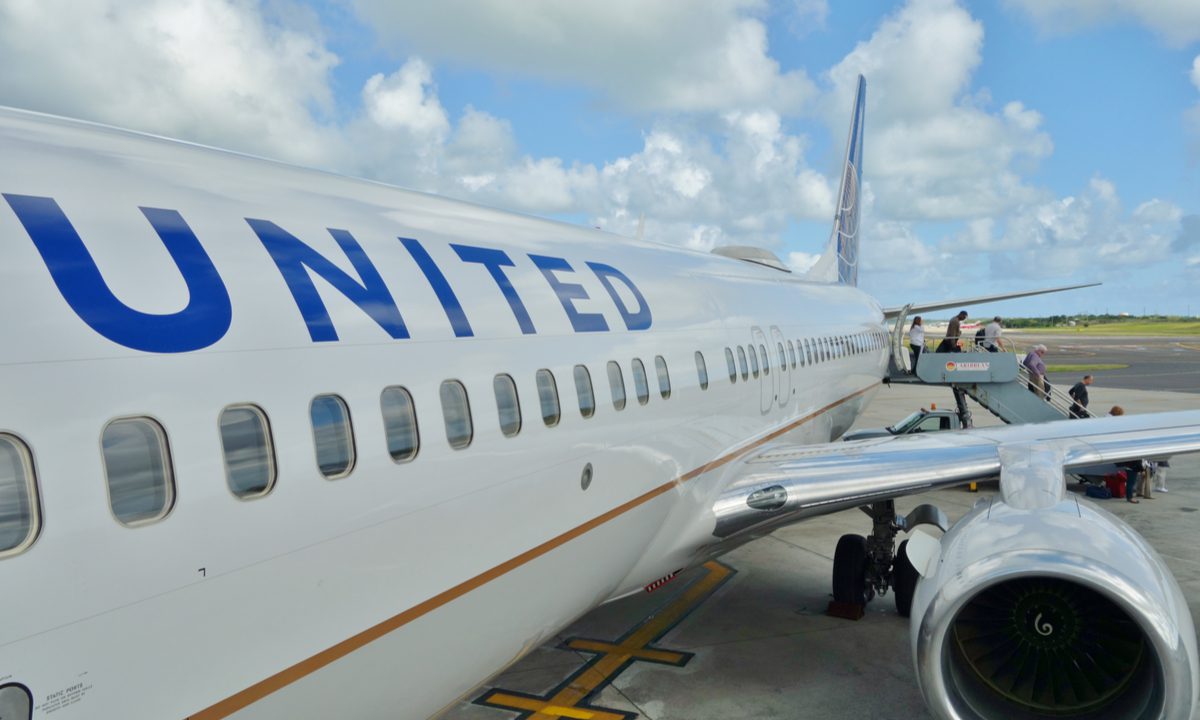United CEO Says Airline Industry Short on People, Planes and Planning

Despite a better-than-expected year-end 2022 performance, United Airlines sees structural changes to the industry remaking air travel.
On its fourth-quarter 2022 earnings call Wednesday (Jan. 18), United CEO Scott Kirby said, “For a host of reasons, we believe the industry capacity aspirations for 2023 and beyond are simply unachievable, but just like 2022, when the industry capacity was seven points lower than initial guidance, we believe that same thing will happen this year for the same reasons.”
United recorded profits of $843 million on topline revenue of $12.4 billion in Q4 2022.
Kirby cited a litany of constraints: A pilot shortage that the airline is addressing with aggressive recruitment and higher goals of onboarding 8,000 pilots this year; staffing shortages still tied to COVID; supply chain issues with new planes; and unpredictable weather events like snowstorms that recently canceled thousands of flights industrywide.
Additionally, he said, “The FAA and most airlines, with the exception of the network carriers, have outgrown their technology infrastructure and simply cannot operate reliably in this more challenging environment.” That swipe at FAA infrastructure comes in the wake of the Jan. 10 system glitch that forced a shutdown of U.S. air travel in a daylong systemwide disruption.
Using very direct language, Kirby essentially said the U.S.-based air travel systems and most of its constituent airlines have failed to innovate or plan, and that this will cause systemic change.
“I fully recognize that most or perhaps all our competitors will get on their calls next week and tell you ‘one time event, no big deal, no change to our capacity plans.’ If so, I think they’re just wrong,” he said. “It’s intellectually hard. It takes time to get through the denial phase. What happened over the holidays wasn’t a one-time event caused by the weather and it wasn’t just that one airline.”
That’s a reference to Southwest Airlines’ December cancelation of thousands of flights.
Kirby added, “Other airlines are likely to talk about returning to 2019 utilization, efficiency, etc. But we believe they’re just wrong. Our industry has been changed profoundly by the pandemic, and you can’t run your airline like it’s 2019 or you will fail.”
On that note, he added, any airline that tries to run at the same staffing levels that it had pre-pandemic is bound to fail and would “likely tip over to meltdown anytime there are weather or air traffic control stresses in the system.”
By Kirby’s estimates, the shortage of people, planes and parts, as well as federal infrastructure all add up to one big airbrake.
“We need 10% more pilots and 5% more aircraft to produce the same number of pre-pandemic ASMs (available seat miles),” Kirby said. “Like it or not, that’s just the new reality and the new math for all airlines,” he said, projecting that UAL is likely the only airline “that’s actually figured this out” and included it in its 2023 guidance.
Taking a victory lap on bets United placed during the worst of the pandemic lull that international travel would recover faster, he said United was the only major carrier that did not retire widebody aircraft and “the only airline in the world” that negotiated a deal with the pilot’s union to keep pilots ready to fly fuller schedules as soon as restrictions began lifting.
United also reported gains in corporate travel. Chief Commercial Officer Andrew Nocella pointed to an ongoing albeit slow recovery of corporate business travel, saying that “while November and December were low relative to October, it’s great to see that January is materially better by about 5 points versus the average for Q4.”
Nocella added that “January represents the start of a new budget year for most, so it’s a great way to start the year. And we’ve heard often that budgets in 2022 were exhausted early [explaining] why November and December travel were a bit disappointing” for corporate travel.
Similarly, Nocella said United’s MileagePlus frequent flier program “is incredibly healthy. The redemption rates are quite normal given where we are with inventory availability, and our customers are using their miles to fly all over the world in the largest global network of any U.S. carrier.”
Despite the good news, no one was safe from Kirby’s criticism of the air travel industry’s response to the COVID crisis or the macroeconomic headwinds that marked 2022, from ultra-low-cost carriers (ULCCs) whose model of paying pilots less and running full schedules “is not a realistic scenario,” to other major carriers making short-term decisions rather than long-term investments.
Kirby even took a shot at Wall Street analysts and the metrics they use to assess the sector.
At one awkward moment during Q&A with those same analysts, he said “a dozen of the Wall Street analysts breathlessly publish a weekly report on industry scheduled capacity. You guys are looking at the wrong data. If you want a forward indicator of what’s going to happen with capacity, you should watch completion factor,” which is an air travel industry equation of the number of scheduled flights operated, divided by the number of scheduled flights.
United COO Toby Enqvist added key details to Kirby’s broad strokes, saying, “We worked over the last three years to prepare for a different, more complex operating environment and a sudden surge in travel demand. To prepare specifically for the 2022 holiday period we purposely build some slack in the schedule and reduce how often we fly during peak times. We accelerated our hiring and added staffing buffers in key locations. We built firewalls to prevent individual weather events from spilling over into the broader network.”
